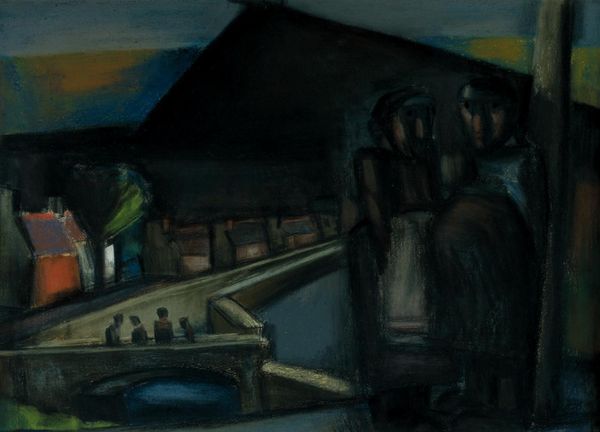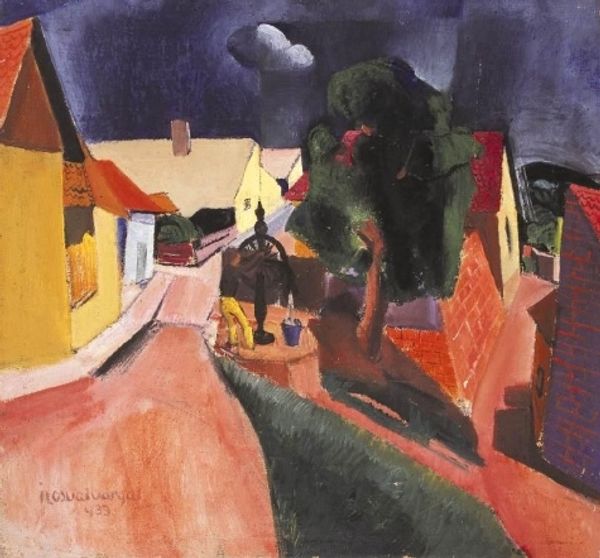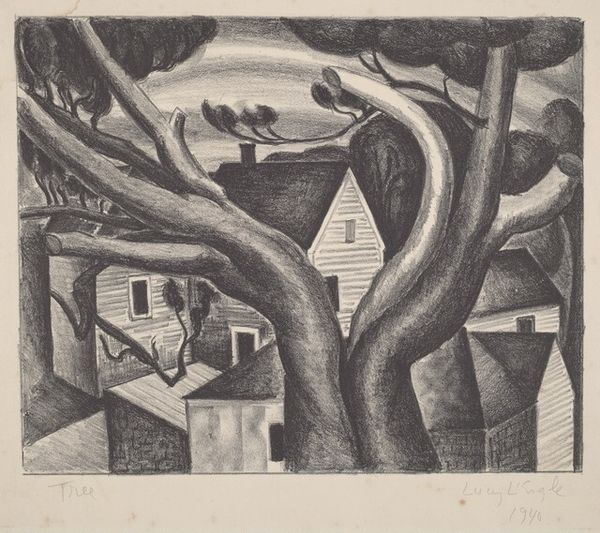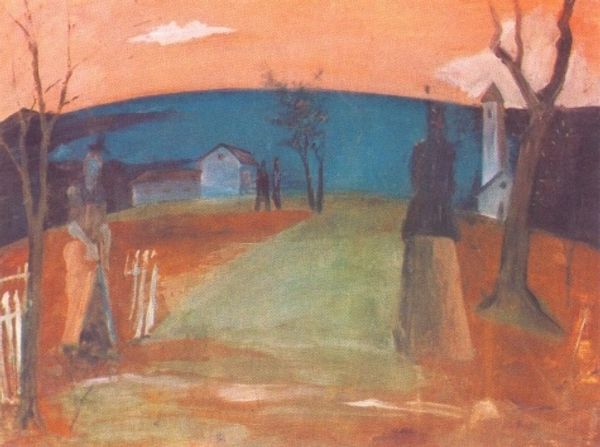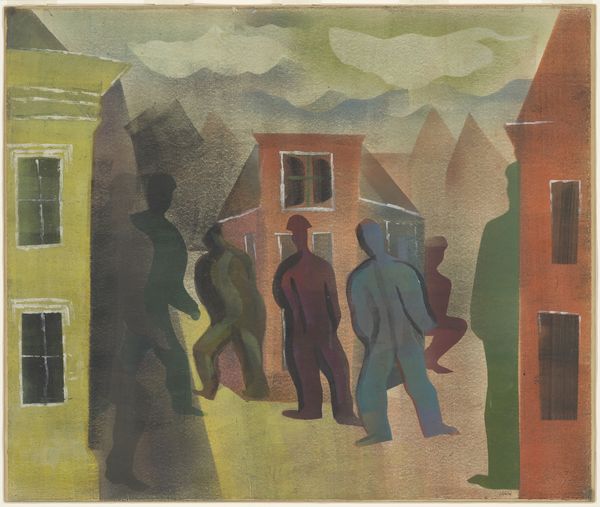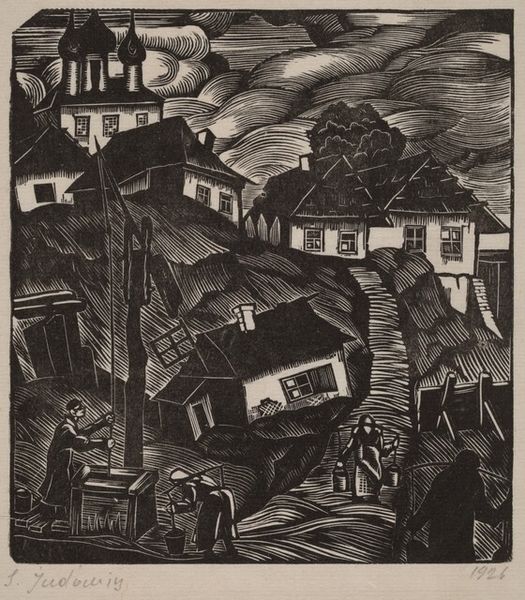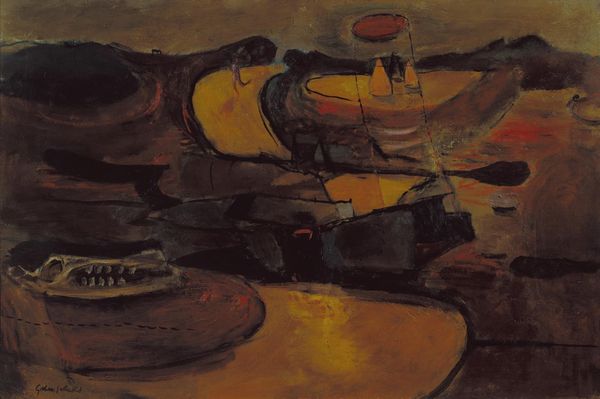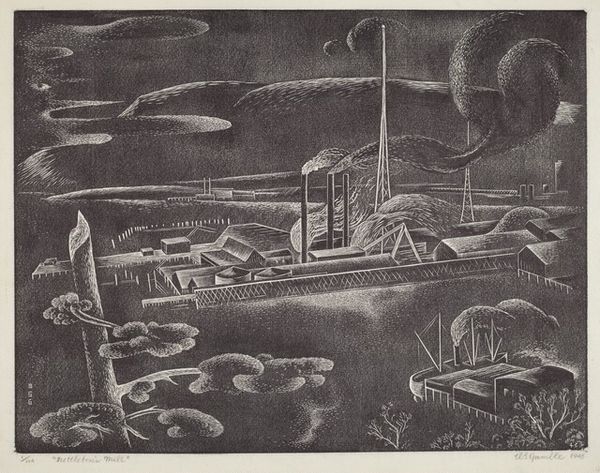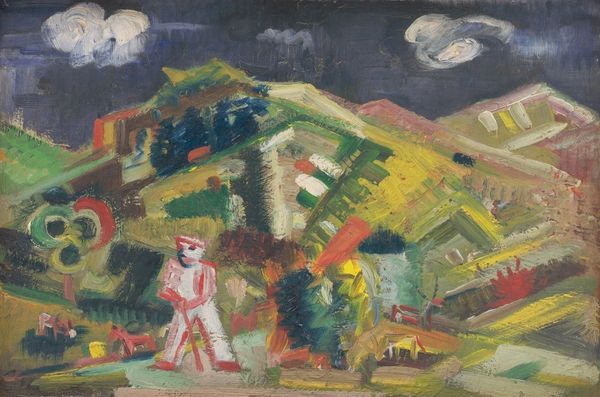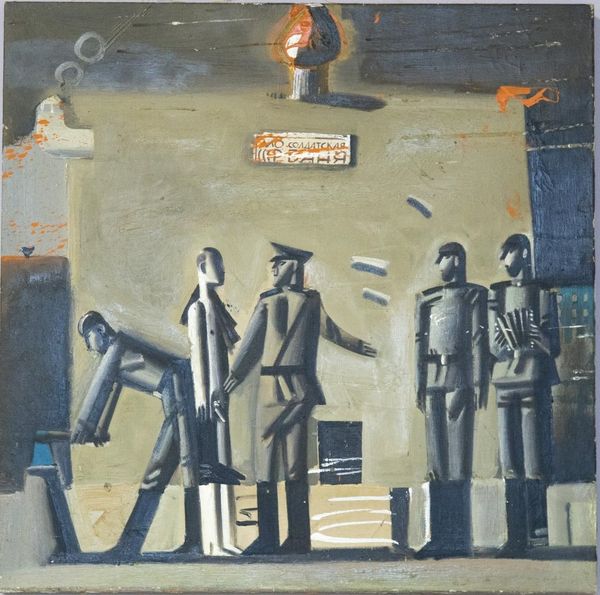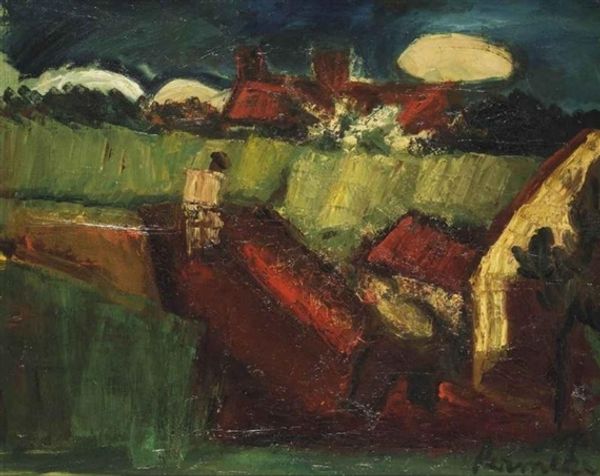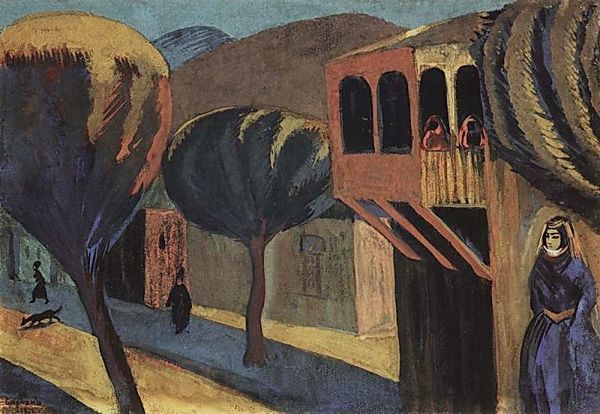
Dimensions: unconfirmed: 635 x 851 mm frame: 875 x 1095 x 90 mm
Copyright: © The estate of Josef Herman | CC-BY-NC-ND 4.0 DEED, Photo: Tate
Curator: Josef Herman’s "Evening, Ystradgynlais" presents us with a Welsh mining town steeped in shadow. Editor: The heavy impasto and restricted palette certainly evoke a somber mood. Curator: Herman, a Jewish émigré from Poland, found in these working-class communities a profound sense of solidarity and shared struggle after World War II. Editor: Yes, note how the verticals of the lampposts and the figures create a stark, almost oppressive geometry. The composition emphasizes verticality. Curator: The artwork is not merely about aesthetics; it’s a commentary on the social and political realities of industrial labor and the quiet resilience of those who live it. Editor: And the red sky, a dramatic touch, could be interpreted as a symbolic representation of the fires of industry or perhaps impending doom. Curator: Ultimately, Herman’s work urges us to consider the human cost of progress and the shared humanity of the working class. Editor: Indeed, it’s a visually arresting and conceptually rich image.
Comments
tate 6 months ago
⋮
http://www.tate.org.uk/art/artworks/herman-evening-ystradgynlais-t06523
Join the conversation
Join millions of artists and users on Artera today and experience the ultimate creative platform.
tate 6 months ago
⋮
Herman’s work was prominently featured in an exhibition called Looking Forward, organised in 1952 by John Berger. Berger adopted a broad view of social realism, and included Herman’s work despite its expressionist treatment of colour and form, and evident lack of period detail. Herman lived in Ystradgynlais, the mining village in south Wales shown here, and Berger felt that his paintings were of direct relevance to modern society. Berger described Herman’s paintings as representing the ‘oppression, endurance, the weight of labour’. The notion that art should be about life was fundamental to Berger’s position. Gallery label, September 2004
